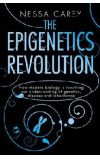
12 Sep 2011 02:05:57
Epigenetics is what happens when genes are actually in action: in the growth of the foetus, in responding to hormones and environmental stress, to learning, to maturation at puberty. In all of these processes genes are modified slightly and act differently from that point on. In short, epigenetics is where nature meets nurture. The grounds for excitement stem from the fact that this old and frequently sterile dichotomy is now being fleshed out with real knowledge of how genes are controlled and how they respond to life situations.
When the human genome sequence was announced in 2001 the rhetoric was highly charged: this is a scroll; the book of life; a huge encyclopaedia; a sacred chain of code 3bn characters long. It is this that is misleading. The notion was that the genes were all and the cells that contained them were just off-the-peg bags. After all, in cloning, if you suck out the nucleus of a cell and replace it with the nucleus of a completely different kind of creature, it will grow into an adult dictated by the new, injected nuclear DNA. In 2010 the maverick biologist and entrepreneur Craig Venter announced that he had created life when he inserted an entirely synthesised DNA into a bacterial cell. But the fact is, he needed cells, and we still can't synthesis them. The cell tells the DNA what to do just as much as the DNA instructs the cell: you can't have one without the other.
Genes don't just issue instructions: they respond to messages coming from other genes, from hormones and from nutritional cues and learning. Much epigenetics revolves around nutrition. If we drink a lot of alcohol an enzyme that metabolises it becomes more active – "upregulated" in the jargon. And similar mechanisms apply to much of our behaviour. The methods by which genes makes these responses often involve very small chemical modifications (usually the addition of a tiny methyl group to one base of DNA). It is almost certain that memory – a classic nurture problem: we learn something and it becomes biologically encoded – involves epigenetics. Once made, epigenetic changes can be very long lasting, which is how our long-term memory is possible.
One of the most charming and heartening passages in the book concerns bees. Bees clearly have phenomenal memories for such small creatures – they signal the whereabouts of good nectar sources by means of their famous waggle dance – and similar epigenetic mechanisms have been found in bees and humans.
So far, this is instructive and highly promising for medical research, but epigenetics finally reaches that "everything you've been told is wrong" moment when it claims that some epigenetic changes are so long-lasting they cover several generations: they can be inherited. This flouts one of biology's most cherished dogmas – taught to all students – namely that changes acquired during life cannot be passed on – the heresy of Lamarckism.
But the evidence that this can occur in some cases appears to be growing. There are lab experiments with mice and rats in which epigenetic effects on coat colour and obesity can be inherited. More suggestive evidence comes from a vast, unwitting and cruel experiment played out in the second world war. In 1944, during the last months of the war, a Nazi blockade followed by an exceedingly harsh winter led to mass starvation in Holland. This had a huge effect on babies born at the time, and the effects of poor nutrition on the foetus seem to have persisted through subsequent generations.
Nessa Carey, science director for a leading epigenetics biotech company and a lecturer in genetics at Imperial College, writes brightly and humanely and is full of optimism for this exciting new dawn – both for the deep understanding of life and the potential for medical applications. She hasn't, though, solved the problem of how to make the mind-numbing complexity of some genomic interactions and the confusing nomenclature of genes palatable to the general reader. On one page alone, we encounter H3K4, H3K27, DNMT3L, EZH2, LSD1 and DNMT3A&B. Too much genomic alphabet soup is indigestible. Nevertheless, Carey's book is the first to set out the epigenetics stall for the general reader, and anyone seriously interested in who we are and how we function should read this book.

